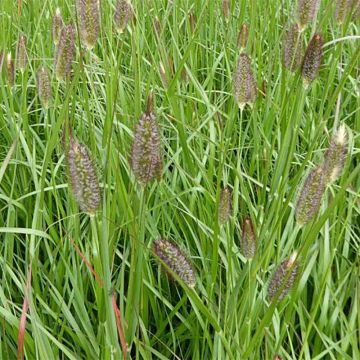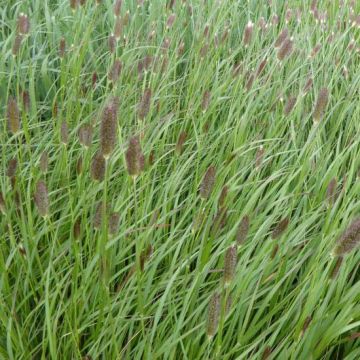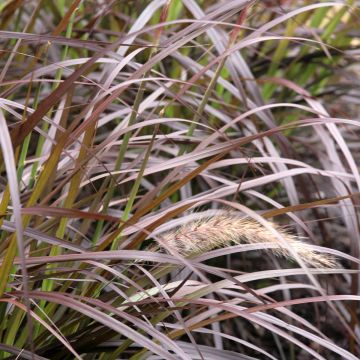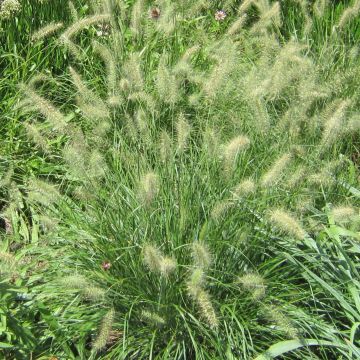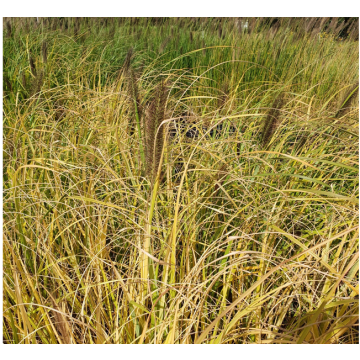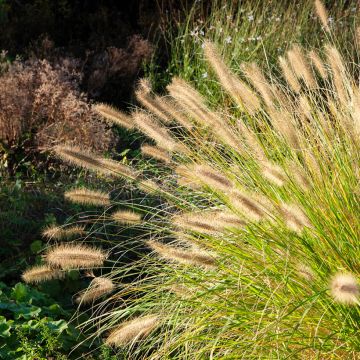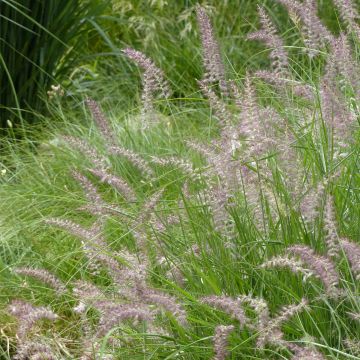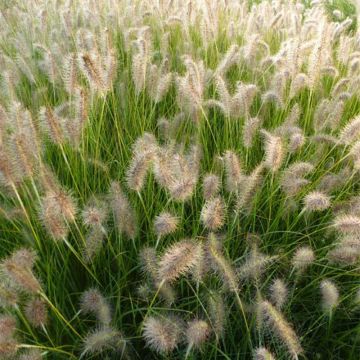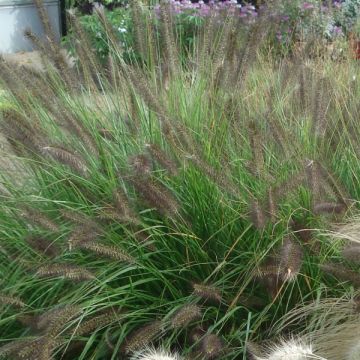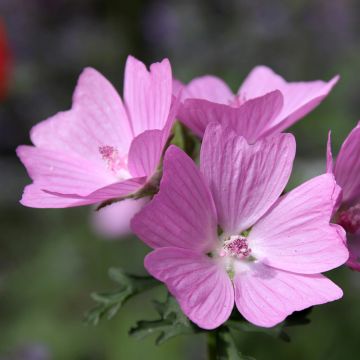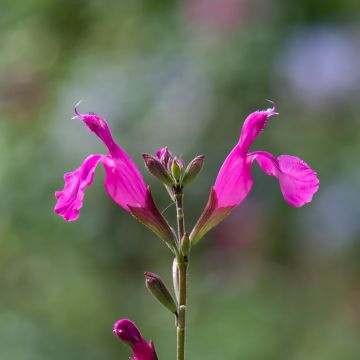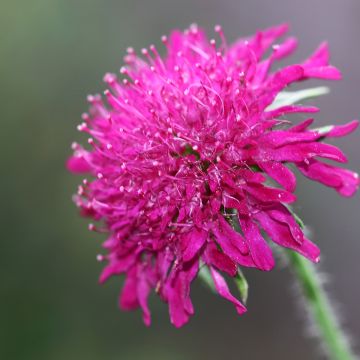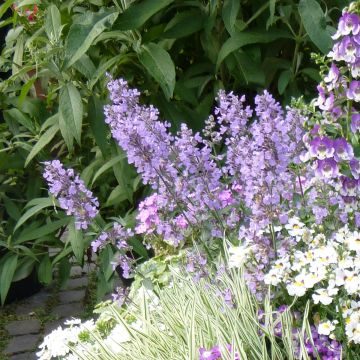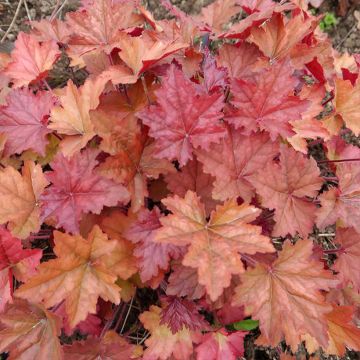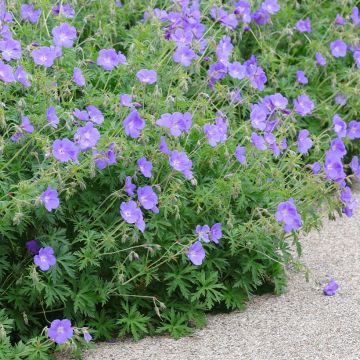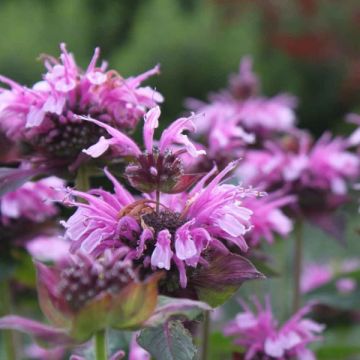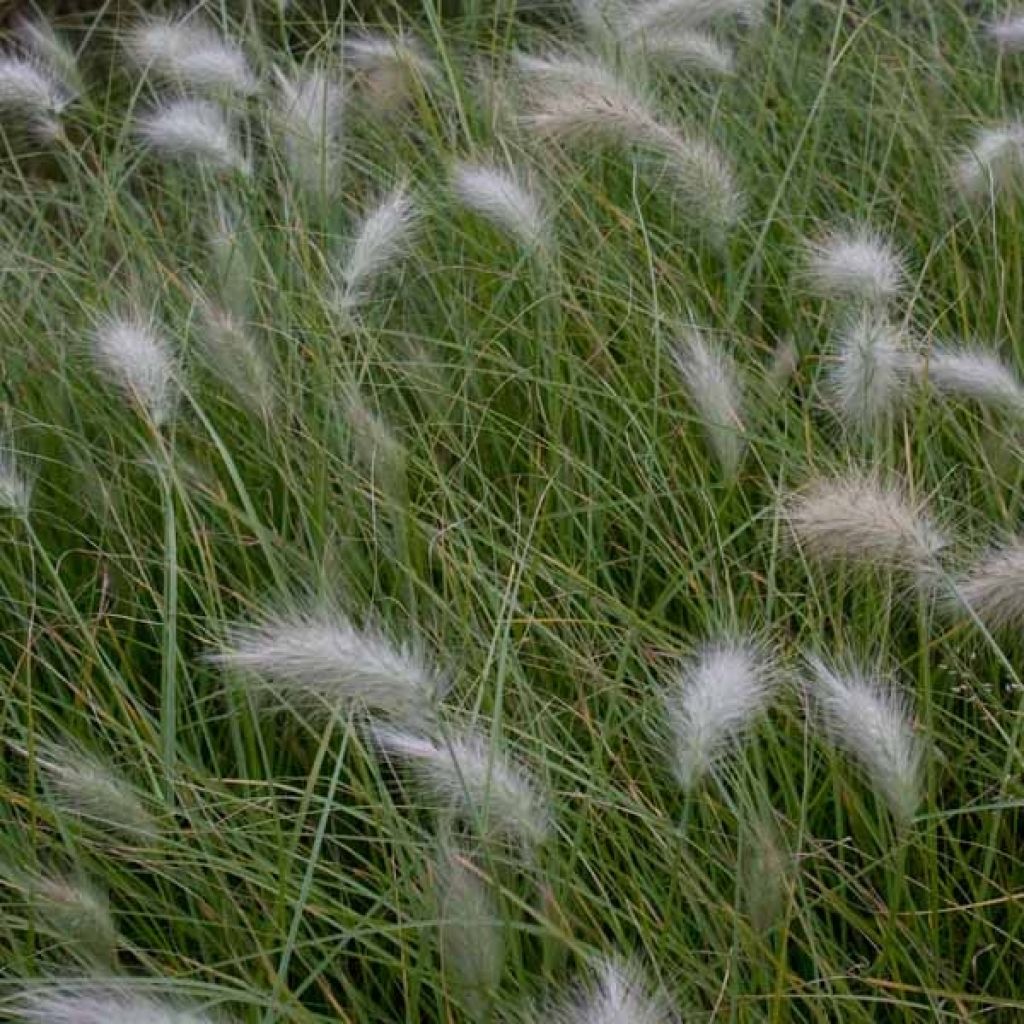

Pennisetum villosum
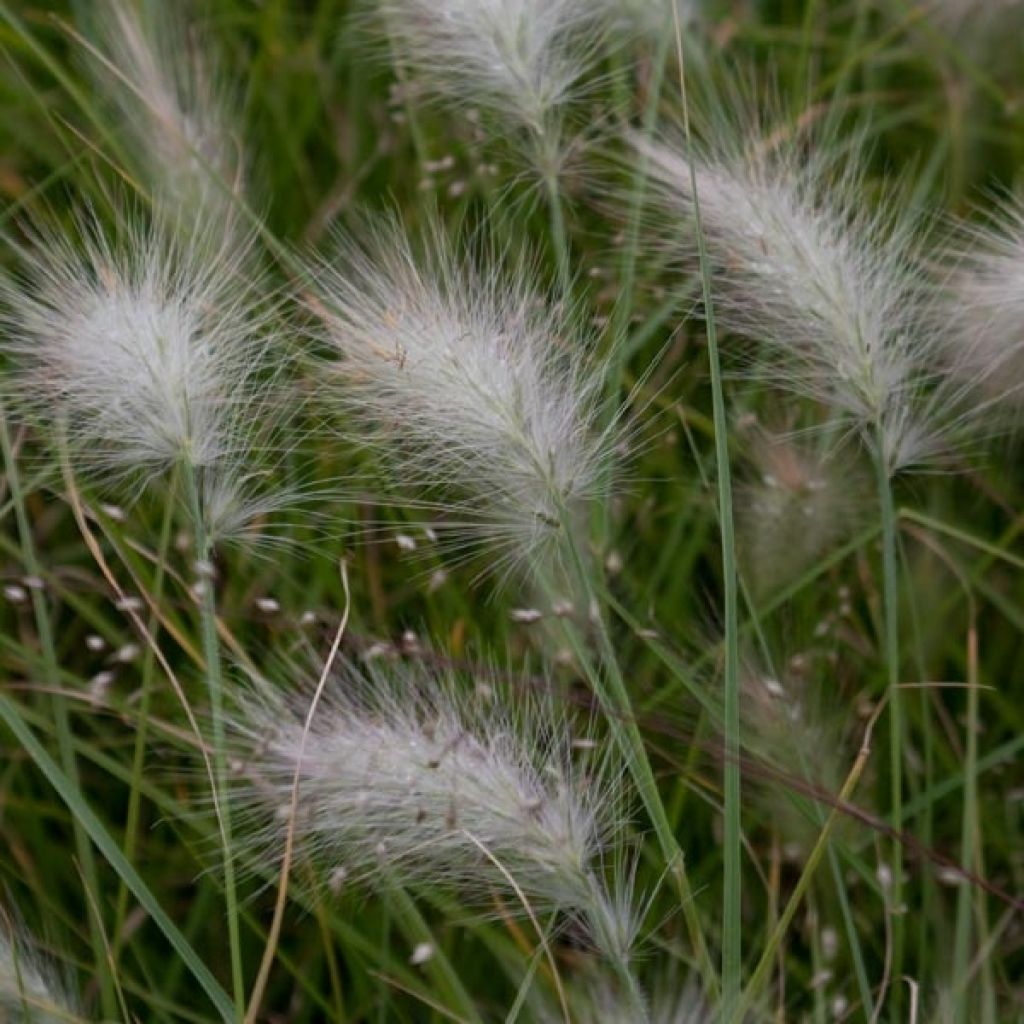

Pennisetum villosum
Pennisetum villosum
Pennisetum villosum
Feathered Spike Grass, Feathertop
This item cannot be shipped to the selected country
Delivery charge from €5.90
Delivery charge from €5.90
More information
Schedule delivery date,
and select date in basket
This plant carries a 12 months recovery warranty
More information
We guarantee the quality of our plants for a full growing cycle, and will replace at our expense any plant that fails to recover under normal climatic and planting conditions.
From €5.90 for pickup delivery and €6.90 for home delivery
Express home delivery from €8.90.
From €5.90 for pickup delivery and €6.90 for home delivery
Express home delivery from €8.90.
Does this plant fit my garden?
Set up your Plantfit profile →
Description
The Pennisetum villosum, also known as Feather Grass, is a most graceful perennial grass, well adapted to mild climates and relatively dry summers. It has a very flexible habit and seems to bend under the weight of its numerous fluffy, feathery, almost pure white flower spikes, resembling small rabbit tails. This lovely grass, highly appreciated in dried bouquets, is sometimes grown as an annual as it does not tolerate humid and cold winters well, especially in compact, clayey or waterlogged soils. Crowned with white flakes, it will form charming borders, wander in a flowery meadow, and slip into rockeries or summer compositions on the terrace.
The Pennisetum villosum, (synonym Cenchrus villosus, Pennisetum longistylum) is a plant of the grass family, native to the mountains of northeastern Africa and the Arabian Peninsula. This small, clump-forming grass, non-invasive by its roots, theoretically perfectly perennial, forms a tuft with a spreading habit, very flexible and very dense with fine dark green leaves that will reach a height of about 60-70cm (24-28in) in flower (40cm (16in) for the foliage), with a diameter of 50cm (20in) at maturity. The foliage, mostly deciduous, consists of multiple 15cm (6in) long, very thin, linear leaves. If the habit of the plant seems a bit disorderly before flowering, everything falls into place when its long, slender flowering stems emerge, usually in August. They elongate and gracefully bend, weighed down by a plump terminal inflorescence, composed of numerous ivory white spikelets, very bright. These feathery spikes remain decorative for a long time and turn a more brownish hue when ripe. The Pennisetum villosum self-seeds quite easily in light soil, allowing it to perpetuate itself despite the climatic vagaries that could make it disappear.
Moderately hardy - often reported to withstand -5°C (23°F) - this grass tolerates the cold quite well in well-drained soil; it has found a place in our large rockery, on a south-facing slope where it remarkably withstands our humid winters. Equally beautiful among the wildflowers of a flowery meadow as in a rockery, nestled in a pocket of soil between large stones, it also makes very beautiful borders, for example, dominating a sea of blue catmints, a carpet of aubrietas or wall bellflowers. Its inflorescences bring a lot of charm and lightness to bouquets. It thrives well in a large pot, alone or in the company of summer-flowering annuals (red flax, cosmos, love-in-a-mist), and tolerates summer drought in sufficiently deep soil.
Report an error about the product description
Flowering
Foliage
Plant habit
Botanical data
Pennisetum
villosum
Poaceae
Feathered Spike Grass, Feathertop
North Africa
Other Pennisetum
Planting and care
The Pennisetum villosum is a plant of great ornamental interest, but it requires a very dry, rocky or sandy soil, as well as the warmest possible exposure in cool regions. A scorching location in summer significantly improves its hardiness. On the other hand, in cool and humid regions, it proves to be more sensitive to cold. It is not demanding in terms of soil pH, tolerating the presence of limestone or, conversely, the acidic and poor soils of heathlands. Its cultivation in a large pot, without any problem, allows it to be sheltered from winter rains and strong frosts throughout Europe. Just remember to provide it with more generous watering in summer, especially during very dry weather, and a little slow-release fertilizer in spring.
Planting period
Intended location
Care
-
, onOrder confirmed
Reply from on Promesse de fleurs
Fast maturing perennials
Haven't found what you were looking for?
Hardiness is the lowest winter temperature a plant can endure without suffering serious damage or even dying. However, hardiness is affected by location (a sheltered area, such as a patio), protection (winter cover) and soil type (hardiness is improved by well-drained soil).

Photo Sharing Terms & Conditions
In order to encourage gardeners to interact and share their experiences, Promesse de fleurs offers various media enabling content to be uploaded onto its Site - in particular via the ‘Photo sharing’ module.
The User agrees to refrain from:
- Posting any content that is illegal, prejudicial, insulting, racist, inciteful to hatred, revisionist, contrary to public decency, that infringes on privacy or on the privacy rights of third parties, in particular the publicity rights of persons and goods, intellectual property rights, or the right to privacy.
- Submitting content on behalf of a third party;
- Impersonate the identity of a third party and/or publish any personal information about a third party;
In general, the User undertakes to refrain from any unethical behaviour.
All Content (in particular text, comments, files, images, photos, videos, creative works, etc.), which may be subject to property or intellectual property rights, image or other private rights, shall remain the property of the User, subject to the limited rights granted by the terms of the licence granted by Promesse de fleurs as stated below. Users are at liberty to publish or not to publish such Content on the Site, notably via the ‘Photo Sharing’ facility, and accept that this Content shall be made public and freely accessible, notably on the Internet.
Users further acknowledge, undertake to have ,and guarantee that they hold all necessary rights and permissions to publish such material on the Site, in particular with regard to the legislation in force pertaining to any privacy, property, intellectual property, image, or contractual rights, or rights of any other nature. By publishing such Content on the Site, Users acknowledge accepting full liability as publishers of the Content within the meaning of the law, and grant Promesse de fleurs, free of charge, an inclusive, worldwide licence for the said Content for the entire duration of its publication, including all reproduction, representation, up/downloading, displaying, performing, transmission, and storage rights.
Users also grant permission for their name to be linked to the Content and accept that this link may not always be made available.
By engaging in posting material, Users consent to their Content becoming automatically accessible on the Internet, in particular on other sites and/or blogs and/or web pages of the Promesse de fleurs site, including in particular social pages and the Promesse de fleurs catalogue.
Users may secure the removal of entrusted content free of charge by issuing a simple request via our contact form.
The flowering period indicated on our website applies to countries and regions located in USDA zone 8 (France, the United Kingdom, Ireland, the Netherlands, etc.)
It will vary according to where you live:
- In zones 9 to 10 (Italy, Spain, Greece, etc.), flowering will occur about 2 to 4 weeks earlier.
- In zones 6 to 7 (Germany, Poland, Slovenia, and lower mountainous regions), flowering will be delayed by 2 to 3 weeks.
- In zone 5 (Central Europe, Scandinavia), blooming will be delayed by 3 to 5 weeks.
In temperate climates, pruning of spring-flowering shrubs (forsythia, spireas, etc.) should be done just after flowering.
Pruning of summer-flowering shrubs (Indian Lilac, Perovskia, etc.) can be done in winter or spring.
In cold regions as well as with frost-sensitive plants, avoid pruning too early when severe frosts may still occur.
The planting period indicated on our website applies to countries and regions located in USDA zone 8 (France, United Kingdom, Ireland, Netherlands).
It will vary according to where you live:
- In Mediterranean zones (Marseille, Madrid, Milan, etc.), autumn and winter are the best planting periods.
- In continental zones (Strasbourg, Munich, Vienna, etc.), delay planting by 2 to 3 weeks in spring and bring it forward by 2 to 4 weeks in autumn.
- In mountainous regions (the Alps, Pyrenees, Carpathians, etc.), it is best to plant in late spring (May-June) or late summer (August-September).
The harvesting period indicated on our website applies to countries and regions in USDA zone 8 (France, England, Ireland, the Netherlands).
In colder areas (Scandinavia, Poland, Austria...) fruit and vegetable harvests are likely to be delayed by 3-4 weeks.
In warmer areas (Italy, Spain, Greece, etc.), harvesting will probably take place earlier, depending on weather conditions.
The sowing periods indicated on our website apply to countries and regions within USDA Zone 8 (France, UK, Ireland, Netherlands).
In colder areas (Scandinavia, Poland, Austria...), delay any outdoor sowing by 3-4 weeks, or sow under glass.
In warmer climes (Italy, Spain, Greece, etc.), bring outdoor sowing forward by a few weeks.

































